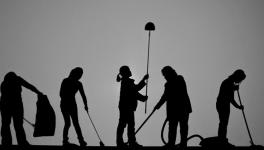Need To Address Unpaid Family Work To Eliminate Child Labour: ILO

Image Coutesy: India Education Diary
Around 152 million children aged between 5 and 17 years are trapped in child labour across the world, said Guy Ryder, director-general of International Labour Organisation (ILO).
Speaking at a panel on child labour on the sidelines of the ongoing 107th International Labour Conference (from 28 May to 8 June) in Geneva, Ryder revealed that between 2012 and 2016, there had been “almost no reduction” in the number of children aged between 5 and 11 years in child labour.
In fact, in the same period, “the number of these most vulnerable, youngest children in hazardous work actually increased,” he said.
Ryder attributed this increase partly to the increase in child labour in agriculture, which is mainly unpaid family work.
“These children typically begin child labour at the age of six or seven and they commonly perform hazardous work as they get older,” he said.
“The challenge is not just about globally-traded garments, tobacco and cocoa; it is also about local markets for sorghum, millet, bricks – and it’s about domestic work as well.”
This observation about addressing child labour in “unpaid family work” is especially relevant for India, where the Child Labour (Prohibition and Regulation) Amendment Act passed in 2016 has drawn widespread criticism as it allows child labour in “family enterprises”. The Indian legislation also reduces the number of hazardous occupations where employment of children is prohibited from 83 to include just three — mining, explosives, and other occupations mentioned in the Factory Act 1948.
The ILO director-general said urgent action was needed to address the “economic root causes” of child labour. The ILO called upon countries to end child labour by 2025.
The panel that was organised on 4 June — ahead of the ‘World Day Against Child Labour’ on 12 June — also saw the participation of Indian child rights activist and Nobel peace prize laureate Kailash Satyarthi.
“If the children are still trapped in the international supply chains, if the children are still enslaved, if the children are still sold and bought like animals – sometimes for less than the price of animals – to work in the fields and farms, and shops and factories, or for households as domestic workers, this is a blot on humanity,” Satyarthi said.
Incidentally, on 1 June, while launching Satyarthi’s book ‘Every Child Matters’, Justice Ranjan Gogoi, who will take over as the Chief Justice of India in October this year after Justice Dipak Misra retires, had criticised the Child Labour (Prohibition and Regulation) Amendment Act 2016, calling it a “mirage”.
According to the Census 2011, there are around 10.1 million child labourers in India aged between 5 and 14 years.
The event also marked the 20th anniversary of the Global March against Child Labour that ended in June 1998. Hundreds of people, including children, had marched to the International Labour Conference, which paved the way for the adoption of ILO Convention No. 182 in 1999 on “Eliminating the Worst Forms of Child Labour”, which was also ratified by India.
India has also ratified another Convention regarding elimination of child labour, the ILO Convention No. 138 or the “Convention concerning Minimum Age for Admission to Employment”.
Get the latest reports & analysis with people's perspective on Protests, movements & deep analytical videos, discussions of the current affairs in your Telegram app. Subscribe to NewsClick's Telegram channel & get Real-Time updates on stories, as they get published on our website.
























